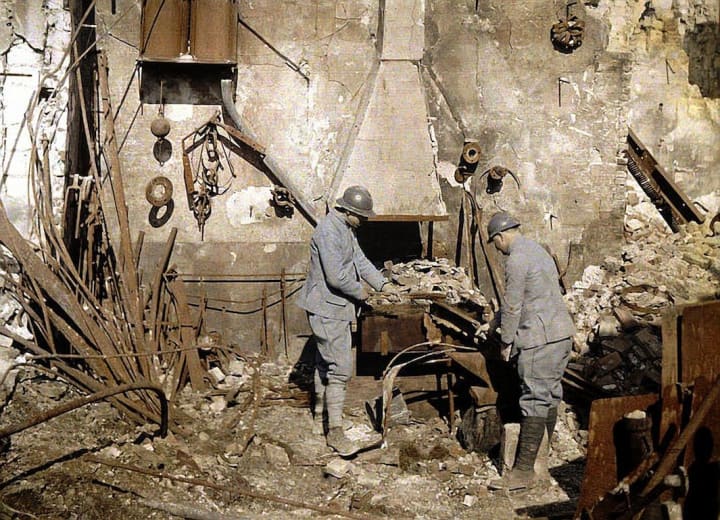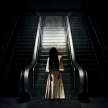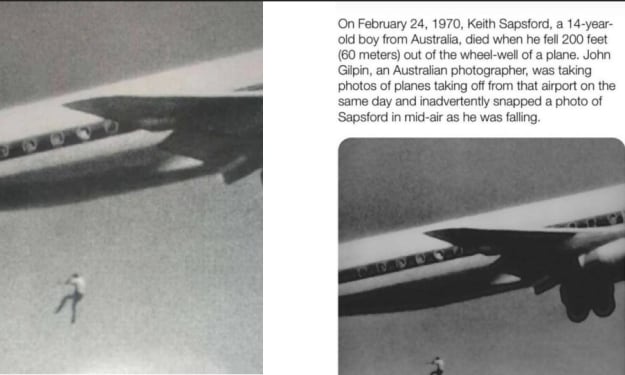Etheldreda Laing’s Autochrome
Etheldreda Laing combined her seasoned creative vision and evolving technology to create timeless scenes around the turn of the century.

Photography was on the verge of a significant shift around the start of the twentieth century. The French Lumière brothers invented the Autochrome process in 1907, and Etheldreda Laing was one of its early masters, as evidenced by the photographs below.
Laing had a keen interest in photography and had been captivated by the hobby since the late 1890s. When Laing and her husband, Major Charles Miskin Laing, moved to Bury Knowle House in Oxford's Headington neighborhood in 1899, she had a darkroom built so she could develop her own photos.

Laing studied drawing at Cambridge, which explains her swift ability to compose the right shot. While Laing was accomplished in a variety of artistic mediums, she is best recognized for her Autochrome work and the specific attention she paid to subject positions.
Many believe she photographed the majority of the images of Janet and Iris in the garden not only because of the lovely surroundings, but also because of the outstanding lighting.
Laing's indoor photographs (such as those of the girls dressed in Japanese kimonos) were more difficult to capture since they required an exposure duration of up to a full minute. Laing's daughters would have had to stand perfectly still for up to 60 seconds for any of these images to be presentable, which explains why individuals of the time tend to look somewhat stern in photographs.
The photographs below bring us back to a time before filters and instant digital photography, when true creativity (and patience) were required to capture the ideal shot.
How Does The Autochrome Work
Autochrome plates are covered in microscopic red, green and blue coloured potato starch grains (about four million per square inch). When the photograph is taken, light passes through these colour filters to the photographic emulsion. The plate is processed to produce a positive transparency. Light, passing through the coloured starch grains, combines to recreate a full colour image of the original subject.
How Autochromes were made?
The production of autochrome plates at the Lumière factory in Lyon was a sophisticated industrial process. First, translucent starch grains were passed through a succession of sieves to separate grains with diameters ranging from ten to fifteen microns (thousandths of a millimetre).
These small starch grains were divided into batches, coloured red, green, and violet, blended together, and then distributed over a sticky varnish-coated glass plate.

The plate was then covered with carbon black (charcoal powder) to fill in any gaps between the colored starch grains. A roller applied a pressure of five tons per square centimetre to the plate in order to disperse and flatten the grains. Finally, a panchromatic photographic emulsion was applied to the plate.
How Autochrome Were Taken
They didn't require any additional equipment, and photographers could use their regular cameras. They did, however, need to remember to put the autochrome plate in the camera with the plain glass side closest to the lens, so that light passed through the filter screen before reaching the sensitive emulsion.

Exposures were taken with a yellow filter, which rectified the emulsion's high blue sensitivity for more realistic color reproduction. This, combined with the light-filtering effect of the colored starch granules, resulted in extremely long exposure periods, around thirty times that of monochrome plates.
How Autochromes were Viewed
Autochromes might be held up to the light for private viewing. However, for convenience of viewing and comfort, they were frequently viewed using special platforms known as diascopes, which included a mirror.

These provided a brighter image and allowed multiple individuals to view the plate at the same time. Autochromes were also projected in public using a magic lantern.
About the Creator
Rare Stories
Our goal is to give you stories that will have you hooked.
This is an extension of the Quora space: Rare Stories
X(formerly Twitter): Scarce Stories
Official Bookstore: davidkellertruecrime
Writers:
....xoxo






Comments
There are no comments for this story
Be the first to respond and start the conversation.